Alec Sharp was born in 1918 in Barrhead, a few miles south west of Glasgow and left school aged 14. It is not known if he did war service, but part of the wartime period was spent in long-term hospitalisation with peritonitis. While in hospital, Alec read A Potter's Book by Bernard Leach and decided to be a potter. Around 1948, he travelled to St Ives and asked Leach to take him on in any capacity. On the principle that all Scotsmen must be engineers, Leach took him on in a technical role and when he wanted a new kick wheel he spoke to Alec. Alec designed a new wheel which incorporated a heavy cast concrete flywheel, a revolutionary concept, which was so successful that Leach moved it into his personal studio and asked Alec to join the workforce. Although Alec was not there for very long, less than 5 years, he was allowed to use his own personal mark on pots alongside the St. Ives seal. After Bernard died the wheel passed to Bill Marshall whose son Andrew now has it.
Alec was a delegate at the International Conference of Craftsmen in Pottery and Textiles held at Dartington in 1952. By then he had moved back to Scotland but presumably his attendance was linked to his time at the Leach Pottery. A stoneware yunomi by Alec was awarded the tenmoku prize at the conference - where it must surely have come under the scrutiny not only of Bernard Leach himself, but also of the other luminaries attending the conference, including Shoji Hamada, Soetsu Yanagi, Michael Cardew, Hans Coper and Lucie Rie.
Alec was employed by Highland Home Industries (HHI) to establish a pottery at Morar, near Mallaig. HHI was mainly concerned with knitting and weaving, but also branched out into silversmithing on the Island of Iona, and into cabinetmaking and pottery at Morar. Pots were sold to tourists through an on-site shop. Some items were personal work by Alec, and examples show his own style emerging through a heavy overlay of St Ives influence. These pieces bear Alec's personal seal beside the pottery's MP seal. As manager of a government-funded training scheme, Alec trained up local workers in pottery skills.
After leaving Morar around 1960, Alec took a post as a pottery adviser to Glasgow Corporation Education Department. With plenty of funding available, every secondary school which showed some interest was to be supplied with a wheel and equipment for teaching pottery. Alec's role was to visit the schools and train the teachers. Visiting Glenwood Secondary School in Castlemilk he met Elizabeth, an art teacher and accomplished painter who became his wife.
In about 1958 he started his own pottery in Rothesay on the Isle of Bute, where he produced pottery for 25 years. During this period he was also teaching and advising education authorities on pottery in schools. He also advised Paisley Museum about acquiring a fine collection of craft pottery, which includes examples by Bernard Leach, Hans Coper, Lucie Rie, Elizabeth Fritsch, and some of Alec's pots. Much of the interest in craft pottery in Scotland is due to Alec's influence.
Alec never really retired. In his back garden he continued to build kilns and had a workshop in his greenhouse where he produced some of his best work, well into his 80s.
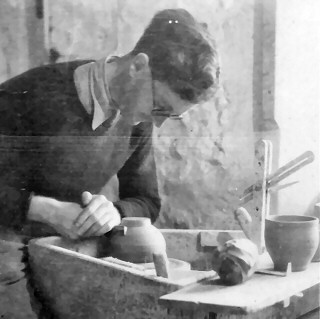
Alec Sharp at the Leach Pottery

Dartington Conference 1952 - Tenmoku Prize yunomi by Alec Sharp
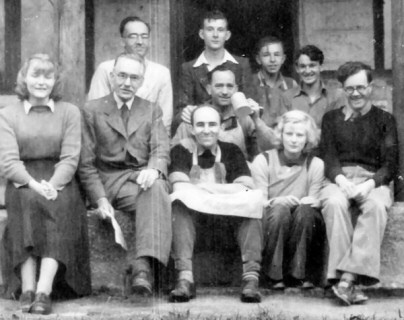
Leach Pottery staff, ca. 1948
Back row: Michael Leach, Kenneth Quick, Joe Benny, Bill, Marshall
Front row: Gutte Eriksen, Bernard Leach, David Leach, Horatio Dunn, Anne-Marie Backer, Alec Sharp

Dartington Conference resume
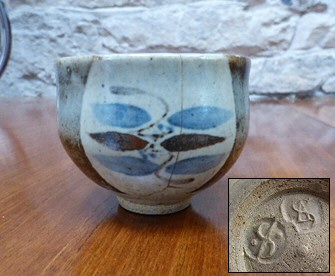
Alec Sharp bowl made at the Leach Pottery
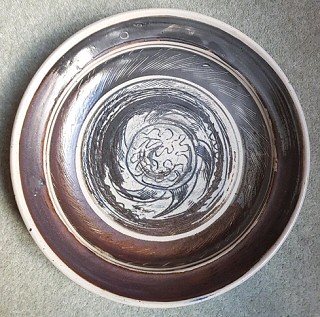
Charger made at Morar Pottery
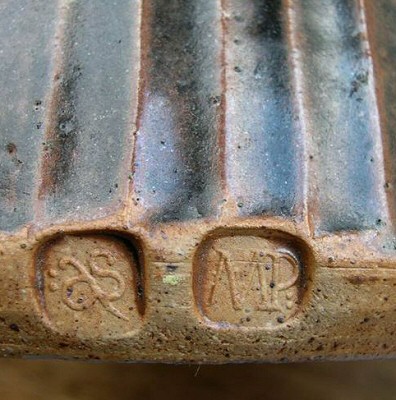
Marks on a facetted tenmoku glazed Morar Pottery pot
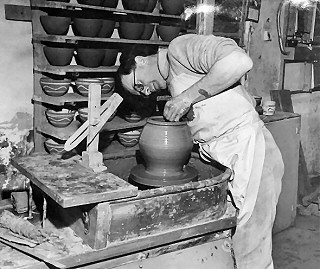
Throwing a vase at Rothesay, Isle of Bute
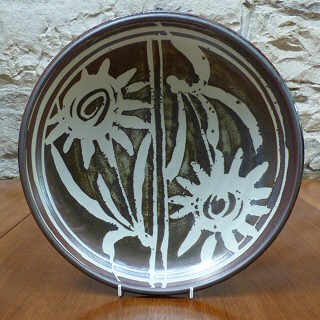
Charger made at Rothesay, Isle of Bute
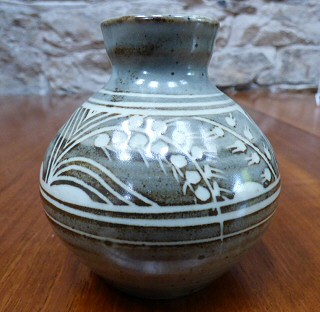
Small vase made at Rothesay, Isle of Bute